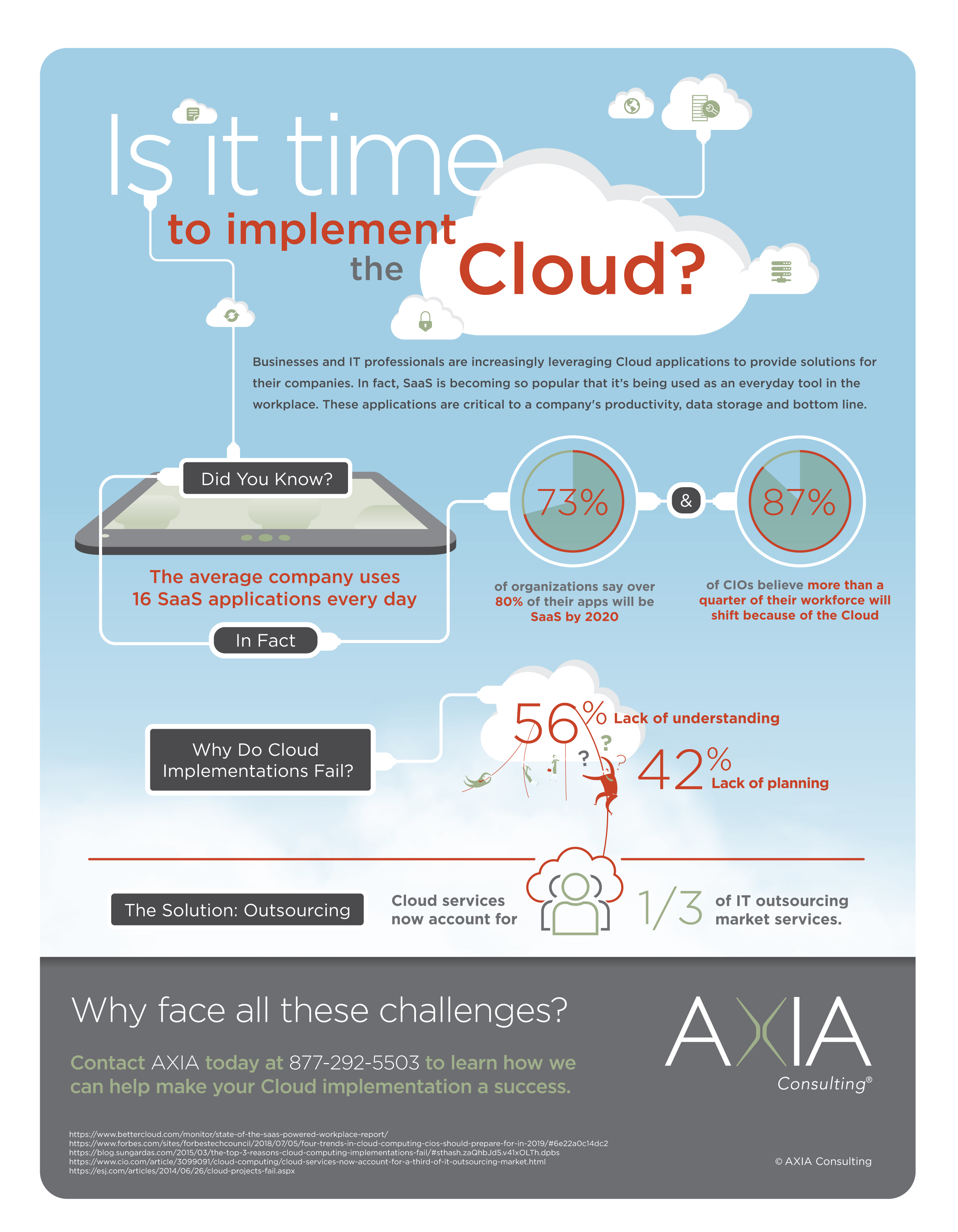Menu
Cloud applications provide valuable solutions to companies and can be very impactful on the growth and success of your business. In every industry, there are endless benefits to using cloud applications ─ from large data storage to platforms that increase your productivity. However, with the Cloud being relatively new to many, there are plenty of myths– particularly as it relates to the services with a Cloud vendor. As with every IT endeavor, it is important to understand all of the components to ensure your implementation succeeds and you don’t lose valuable time and money in the process.
Myth: Cloud vendors will manage your implementation project
Reality: Cloud vendors will only manage their application
It’s a common misconception that a Cloud vendor will be very involved in your day-to-day project management. In reality, your Cloud vendor is focused solely on application-specific responsibilities. Think of your Cloud vendor as part of your team instead of a strategic team leader. They’re responsible for managing, updating and continuing to develop the application based on your needs, therefore, it’s crucial to set expectations with your Cloud vendors at the onset of the engagement. This ensures roles and expectations are clearly defined to establish the right people, processes and technology are in place for ongoing success.
Myth: Cloud vendors will dedicate resources to the project and be onsite for implementation
Reality: Cloud vendors are typically offsite for implementations
While good customer service should make you feel like the Cloud vendor’s only client, the reality is that their team is likely working on several implementations at once. This means that the Cloud vendor will only dedicate resources at certain stages of the project, if at all. Efficiency and productivity can suffer when parties work remotely or divide their attention among various projects. This is especially the case when more than one vendor is involved. Effective communication and coordination can quickly fall to the wayside, causing delays in addition to timely and costly errors. During the vendor selection process, it’s crucial to understand a prospective Cloud vendor’s approach to implementation and ask if they plan to provide a dedicated, onsite team. Projects with onsite, dedicated resources go more smoothly, as teams are able to quickly react, adjust and adapt. It’s something worth paying extra for if the option is available.
Myth: The Cloud vendor owns the application, integration and change management
Reality: Your organizations owns all pieces of the project unless otherwise defined up front
One of the most important aspects of working with a Cloud vendor is clearly defining who owns each piece of the implementation process. At the end of the day, your organization is responsible for the project and its outcomes. Your vendors are simply there to provide support. That means you will need to delegate responsibilities for integration, data transfer, change management and more at the start of a Cloud project. You must also clearly define roles and expectations, minimizing the chance of project gaps and disagreements later. Typically, each Cloud vendor will be responsible for their part of the application and integrations, while your team will handle change management. If your team doesn’t have the resources available to manage project planning and delivery internally, hire an experienced consultant to help coordinate all of the moving pieces.
To determine if a Cloud Application Implementation makes sense for your organization, make sure you have the proper planning in place to understand roles, service parameters and define expectations before signing a contract with a Cloud vendor.
AXIA’s team of Cloud Application Implementation experts can help you assess your current state, and will help plan and guide you through your Cloud Application Implementation. If interested in our streamlined assessment, call 877.292.5503 or email info@axiaconsulting.net to get started.

